Хаас за Белгия
Ромен Грожан:
Belgium is the home of Haas Automation’s European headquarters. You’ve been to many appearances and interacted with many Haas Automation customers. How have they embraced the team and Gene Haas’ endeavor into Formula One?
Every time we do something with Haas Automation it’s been very well organized and we always receive a very warm welcome from all the guests attending. It’s been great to be representing Haas Automation in Formula One. It’s a big name in motorsports and a big name in industry. Whenever we meet their customers, especially when we’re with Gene (Haas), they’re always very happy. It feels like a big family, which is nice to be a part of.
How do you prepare for the unpredictability of the weather at Spa, as one part of the course can be clear and dry while another portion can be wet and slippery?
Basically, you don’t. It’s something that’s out of your control. You don’t really worry about it. When it comes to qualifying or race day, yes, you have to make decisions, but it’s never black or white at Spa.
Spa has been called a driver’s track. Why?
It’s just a great track. There are very high-speed corners and there are a lot of turns, different types, some high speed, some low – just a good variety overall. It gives you a good feeling to drive.
Spa has high-speed straights and corners combined with a tight and twisting section, especially between turns eight and 15. How do you set up your car to tackle all the different aspects of the track? Do you have to make sacrifices in one section to gain an edge in other sections?
You always see different approaches at Spa. Either you’re fast in sector one and sector three, which are the high-speed sectors, or you’re fast in sector two, which has more of the corners. Both work pretty well, so it’s a matter of how you want to approach the race.
Can you describe the sensation you feel inside the car when you drive through Eau Rouge and Raidillon? Are you able to take that section flat out?
The first lap you go through flat out, you feel sick, like you’re on a rollercoaster because it goes up and down. You’re thinking, will I make that for the race? But, once you’ve done it once, it’s all ok and you just enjoy the g-forces.
How important is it to enter Eau Rouge in clean air to ensure you have the maximum amount of downforce available?
It’s certainly a corner where you don’t want to have a mistake. Qualifying in clean air is certainly quite good. On the other hand, if you get a big tow, you can have a massive advantage going into turn five. There’s a bit of an argument for both philosophies there.
Your most recent podium was earned in last year’s Belgian Grand Prix. You started ninth and made it all the way to third, finishing behind the Mercedes duo of Lewis Hamilton and Nico Rosberg. How did you make up so many positions?
We had a good car in Belgium last year. I had qualified fourth, but started ninth due to a gearbox penalty. We had a good strategy and good timing with a safety car, too. I managed to overtake a few cars and get on the podium. Honestly, it was one of those weekends where everything just goes to plan.
Prior to last year’s Belgian Grand Prix, your last podium came in 2013 at the United States Grand Prix in Austin, Texas. How good did it feel to get back on the podium, especially after enduring a 2014 season where you only had two point-scoring finishes?
It was great for all the guys, and for myself. We had a perfect weekend on the track. For everyone involved, it was a very good feeling. I guess it was kind of the same feeling as scoring the first points for Haas earlier this season.
Does a race like you had at Spa in 2015, where after a trying season in 2014, remind you that podiums are possible with determination and hard work?
If I turn up at a race weekend not thinking that I’m the best, or that I can’t win the race, I’d be better off staying at home with my children. I always want to be on the podium. I always want to try to win the race. Of course, it depends a lot on the car, but in the end, you can never give up and you always strive to give your best. That’s the mentality you should have.
Do you have milestones or moments from your junior career that you enjoyed at Spa?
I won the GP2 title there in 2011. That was a great year.
What is your favorite part of Spa?
I can’t choose just one part and say it’s my favorite. The whole circuit just comes together nicely.
Describe a lap around Spa.
You start off with the hairpin at La Source. It’s a very low-speed corner. You need a good exit to go flat out up to Eau Rogue and then you’re on to turn five, the first right-left corner. That’s normally in fourth gear. Turn seven is quite good fun. It’s a high-speed corner going down. Then you’ve got turn eight with tricky braking. You need to be well positioned on the right hand side of the exit for turn nine. Then you’re downhill again massively to the double-left turns 10 and 11 – the fastest corner of the circuit. Then it’s on to the second right-to-left corner, carrying a bit more speed than you did into (turns) five and six. The next double right hander is very important to go to the backstraight, which is very long. You then go through the Bus Stop chicane – you need big braking. Then you have a very tricky low-speed corner, where the exit and the traction are tricky. It’s very difficult. If you get it right, you get a good lap time.
Естебан Гутиерес: Belgium is the home of Haas Automation’s European headquarters. You’ve been to many appearances and interacted with many Haas Automation customers. How have they embraced the team and Gene Haas’ endeavor into Formula One?
Haas Automation is very important to us, especially when their guests visit the track. Their support is great for our team and for their customers and employees. It’s great motivation for their company to be interested in and to follow F1. For us, we gain a lot of motivation from their support.
How do you prepare for the unpredictability of the weather at Spa, as one part of the course can be clear and dry while another portion can be wet and slippery?
I think you need to make quick decisions throughout the weekend, especially during the race as it’s a way to gain an advantage. Making a wrong decision can be very detrimental, but that’s what’s special about Spa. It’s a very long track and it can sometimes only rain on one part of the track, on one or two corners, and if you’re on slicks you just need to deal with it. Ultimately, you only want to come in for full wets if it’s raining throughout. You really have to be ready and open minded during the weekend.
Spa has been called a driver’s track. Why?
It’s a track that has a lot of corners, as well as being a very long track where you can gain a lot of time if you do everything properly and if you’re consistent throughout the lap. This also depends on how much downforce you have on the car as the circuit has a lot of high-speed and fluid corners, which are important factors.
Spa has high-speed straights and corners combined with a tight and twisting section, especially between turns eight and 15. How do you set up your car to tackle all the different aspects of the track? Do you have to make sacrifices in one section to gain an edge in other sections?
It’s a track where you have to compromise a lot because you don’t want to lose too much speed on the straight and you don’t want to lose too much downforce in the corners. It’s important to have an efficient car to find the best compromise between aero and the mechanical set up.
Can you describe the sensation you feel inside the car when you drive through Eau Rouge and Raidillon? Are you able to take that section flat out?
Those two corners are usually flat out. It’s an amazing feeling approaching Eau Rouge. It goes up and you can feel the compression at the beginning of the corner and as the car is moving though the corner. As you go uphill, sometimes the car is jumping on the curb at high speed. It’s amazing. It’s difficult to describe it because you have to experience it.
How important is it to enter Eau Rouge in clean air to ensure you have the maximum amount of downforce available?
Even in the race sometimes you have to be flat out if you are running behind someone you want to overtake. It’s a corner you don’t require much downforce to make it flat out. Usually, we reduce the downforce at Spa because of the long straights and you want to have the least drag possible in those areas. It’s a compromise of how much downforce you set. Even with a low configuration of downforce, Eau Rouge becomes quite challenging, but usually very nice if you can take it flat out.
Do you have milestones or moments from your junior career that you enjoyed at Spa?
I’ve had a few incredible races in the wet at Spa. One of the most fun races I’ve had was starting from the back after being disqualified. I manage to overtake my way up the grid but, unfortunately, at the end I was penalized again by overtaking someone on the very last lap when the safety car was out. It’s a great memory of Spa and it’s a track I always enjoy. Hopefully this year will be just as enjoyable and we’ll do our best to make it a successful weekend.
What is your favorite part of Spa?
I would say Eau Rouge. It’s a great corner. It’s iconic and it’s great to drive.
Describe a lap around Spa.
Approaching into turn one, it’s a slow-speed hairpin corner which prepares you for the straight that takes you to Eau Rouge. You go down into Eau Rouge which is turns two, three and four. After Eau Rouge is turn five where you go flat out all the way from the hairpin to turn six, which is quite a long distance and takes a bit of time. Through Eau Rouge you have to take a lot of curbs and try to make a precise line going flat out in order to be able to scrub the least speed possible. Going down into turn six it’s quite big braking. It’s a medium-speed corner, right then left to turn seven. That line is very important between those two corners to prepare for turn eight. You then brake downhill. It’s a pretty long corner and you’re usually struggling a lot on power as you prepare for turn nine, which is a medium-speed corner and quite tight between the two corners. Then going out of turn nine it’s quite quick as you use all the curb. You head to turn 10, which is a high-speed corner to the left, and then turn 11, which is one of my favorite corners. It’s usually a fairly medium- to high-speed chicane. The car understeers there and you go on power trying to turn the car with the throttle, which makes it interesting. Then you have turn 13, which is to the right as you prepare for the long straight which takes you down to the last few corners – a slow-speed chicane where the surface changes. The track goes upward and there are a few strange angles on the apex of the corners which makes the car move a little, but it’s important as you can gain a lot of time. You then exit the corner to finish the lap on the main straight.
Гюнтер Щайнер: Belgium is the home of Haas Automation’s European headquarters. You’ve been to many appearances and interacted with many Haas Automation customers. How have they embraced the team and Gene Haas’ endeavor into Formula One?
The customers love it. I would think it would be pretty cool to be associated with a company that just got their own Formula One team. They’re truly a part of Haas F1 Team. The customers at these events have fun, and they’re able to talk and interact with our drivers.
How do you prepare for the unpredictability of the weather at Spa, as one part of the course can be clear and dry while another portion can be wet and slippery?
You can prepare for the race by getting the team’s times down for when you need to change the tires. Otherwise, I think the driver’s experience comes into play here – what to do and when to do it. It all comes down to the driver and what they want to do next.
How helpful is it to now have clear instruction as to what can be said on the radio and when during a race weekend?
It’s nice to know that you can’t get fined now for something you didn’t have intentions of doing. Before it wasn’t clear on what was right or wrong to say, so it was difficult to obey the rule. Now we can say what we need to say. If somebody goes back now and listens to the instructions that were given to the drivers, they realize it wasn’t something said to make them go faster but rather solving the problem at hand. It allows us to get a read from the drivers now on the tires and other information that becomes useful to help us perform better. I don’t think it makes racing any less interesting by telling them something. For me, I don’t think there is a gain or loss, but it makes it easier for the team since now the information can be more clear.
Fuel management played a role at the German Grand Prix, as the Hockenheimring saw drivers at full throttle for two-thirds of every lap. But Spa is 1.5 kilometers (.932 of a mile) longer than the Hockenheimring and drivers are on the throttle just as much. How much does fuel management play into your strategy at Spa?
Fuel management is about the same, and it’s very important because the car needs the right time to lift off. Now with the radio communication, it is helpful because the engineer can give advice rather than in the past when the driver would ask and the engineer could not answer.
Spa has high-speed straights and corners combined with a tight and twisting section, especially between turns eight and 15. How do you set up the car to tackle all the different aspects of the track? Do you have to make sacrifices in one section to gain an edge in other sections?
Like in Hockenheim, we play between levels. It comes between using a low downforce and high topping speed at a low track or using the downforce in the twisty section and losing a little bit of speed in the fast sections.
There has historically been a high incidence of safety cars at Spa. When the safety car comes out, be it virtually or physically, how does it affect your strategy, and is there any way to plan in advance for a safety-car scenario?
The safety car is always included in the plans in advance. The strategy depends on what lap the safety car comes out on, which tire we are on, and if we should come in or stay out. One of the most important things before the race starts is to know the safety car window, when it opens and when it closes. It changes during the race because you get better data on the tire degradation and also from the positions the other competitors are in at that time.
Tires and the duration of their use was the topic coming out of last year’s Belgian Grand Prix. As we come up to the one-year anniversary of the discussion of lap limits on tire usage, is it still an issue, or with Pirelli introducing three compounds to choose from and mandating that two of those three compounds be used in the race, is the topic of limiting tire usage moot?
Pirelli has stepped up to give minimum tire pressure and I think that helps a lot. They get a lot of data from the teams and then they use that data to give advice. They usually give advice on tire pressure and what the maximum laps on tires should be. The biggest factor is them giving the minimum tire pressure from the data they have collected from the teams. Pirelli has done a great job with that and it helps a lot.
Does the current generation tire’s performance dictate how long you can stay on a set, because the rate of fall-off can be so drastic?
Normally, yes. It’s a fine line because when the driver comes in, the tire is at the edge. Sometimes there is still 20 percent of tire left, but you come in because the lap times are so slow that there is no point of staying out.


















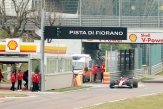
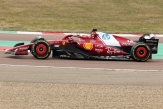
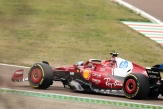
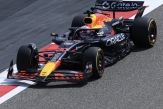
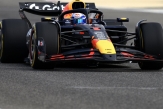
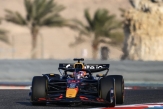

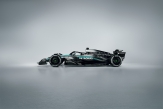
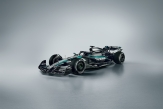
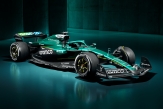
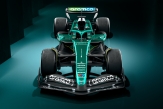
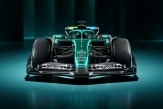
.jpg)
.jpg)
.jpg)

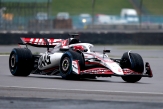

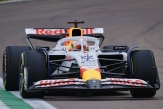
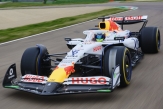
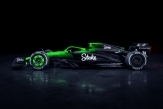
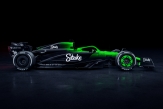

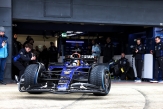
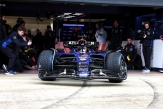
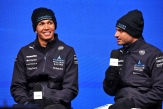

02/12/2025 от Огнян Тенчев (drJeckyll), няма коментари